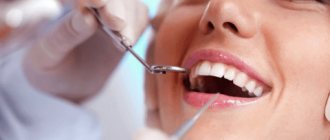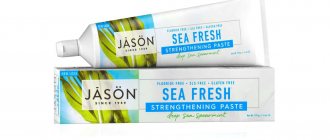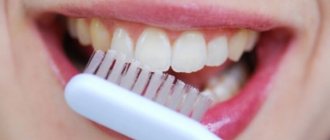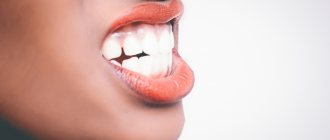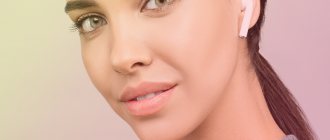In our culture, the standard of beauty is a snow-white smile. In fact, healthy, strong teeth are yellowish. The minerals contained in hard tissues give them not only strength, but also a yellowish tint. If pigmentation gets out of control, instead of a healthy shade of enamel, we end up with completely unattractive yellow teeth. This is not only an aesthetic problem, but also a psychological one. A person with yellow spots on his teeth is embarrassed to smile, prefers not to engage in conversations, and becomes withdrawn. Dentists pay a lot of attention to the problem, developing more and more new methods for lightening enamel.
Reasons for appearance
If we could eat with the help of magic pills: swallow one little thing, drink it with clean water, and that’s it, then we wouldn’t suffer from discoloration of our teeth. But until they are invented, we eat foods that sometimes have a coloring effect:
- chocolate;
- coffee;
- beet;
- carrot;
- red wine and much more.
Gradually they eat the white color. In addition, teeth may turn yellow due to:
- smoking;
- treatment with tetracycline antibiotics;
- frequent consumption of strong black tea;
- the presence of diseases of the gastrointestinal tract;
- wearing braces near the place where structures are attached;
- Because the child is too lazy to brush his teeth properly, some of the bacteria settles on them.
We cannot always completely eliminate these factors.
But we can remove yellow stains from teeth. The exception is heredity. If parents have naturally yellow teeth, most likely their children will have a similar shade.
Don’t be upset: this enamel is stronger than snow-white enamel. But if you want to correct a flaw in nature, a dentist can help you do it. In other cases, we try to clean yellow teeth from teeth at home.
Before you begin whitening, visit your dentist and make sure there are no problems in your mouth:
- carious cavities;
- gum diseases in the acute stage;
- stomatitis and other unpleasant phenomena.
If they are found, treatment will be required first.
Why do teeth turn yellow?
It all starts with a small raid. After eating or drinking, a thin film – pellicle – settles on the enamel. Bacteria begin to multiply on its surface, forming plaque. No brush can remove it completely. A dental plaque is formed, which tends to become stained under the influence of pigments, drugs, and resins.
Alas, plaque is not the only cause of yellowness, there are others:
- Genetics
Each person has their own shade of enamel. It is laid down at conception and a special gene is responsible for this. There are congenital diseases that are accompanied by enamel defects (amologenesis, marble disease). Dark shade can be inherited from nature, just like eye color or nose shape.
- Food
Through pores in the enamel, pigments from food penetrate into the dentin, changing its color. In the first place is coffee, black tea, dark berries, red wine. However, there are products whose ability to stain dentin we do not even suspect. Green tea, for example, or vegetables containing carotene: carrots, tomatoes, spinach. Water can have a yellow tint if it contains too much fluoride.
- Medicines and filling materials
Some antibiotics, the most famous of which is tetracycline, can change the color of teeth.
It also changes when using filling material, amalgam.
. Pigments from it can spread throughout the entire crown.
- Age
From the moment the first one erupts, we put our teeth to the test. We eat hot and cold, sour, drink sweet soda, crack seeds, smoke. It's no surprise that the older we get, the more likely we are to develop yellow stains on our teeth. In addition, the thickness of plaque increases over the years, changing the color of the enamel. Teeth become yellower.
- Smoking
Cigarettes contain tar and tar. They settle on the enamel, giving it a yellow-brown tint that begins to accumulate between the teeth and then spreads to the entire surface.
- Oral hygiene
If you do not take care of your teeth, forgetting about regular brushing or flossing, their color will quickly cease to please you. It is worth remembering that professional cleaning is the best way to remove plaque. It should be carried out at least once a year.
It is necessary to care not only for permanent teeth, but also for milk teeth. This needs to be done especially carefully if you have braces installed.
- Location
It happens that fangs look yellower than other teeth. This is the norm. The thickness of the enamel is the same everywhere, but the thickness of the dentin on the fangs is much greater. Therefore, the shade of the fangs is yellowish, even if the rest of the teeth are white.
- Lesions of hard tissues
With a wedge-shaped defect, the teeth turn yellow near the gums, exposing the neck. With fluorosis, yellow spots are located over the entire surface. If a yellow tint appears and it darkens over time, this is a reason to consult a doctor.
How to remove plaque at home
You can get rid of yellow plaque using traditional methods. Let's list popular techniques that, as practice shows, allow you to forget about yellow teeth and delight others with a movie star smile.
Vodka
An interesting method available at home is getting rid of plaque on teeth using... vodka. This method is contraindicated for children. And if you are over 18, try it.
Procedure:
- Measure out 2 tablespoons of baking soda.
- Add a teaspoon of vodka.
- Pour a teaspoon of lemon juice into the mixture.
- Add half a teaspoon of salt to the mixture.
- Mix the ingredients.
- We brush our teeth once a day for a week.
Thorough cleaning ensures plaque removal in 5–7 days. Store the mixture in a jar in the refrigerator.
Table vinegar
After mixing the ingredients, we brush our teeth with this paste.
- ½ teaspoon of soda.
- ½ teaspoon vinegar.
- ⅓ teaspoon salt.
We clean for one minute, it doesn’t take long – after all, the composition is quite aggressive. This way you can quickly whiten your teeth.
Activated carbon
Cleaning allows you to remove soft plaque.
- Place 1–2 tablets of activated carbon in a saucer.
- Knead the coal until it becomes dusty.
- Apply charcoal to your teeth.
- Massage with a brush for 1-2 minutes.
- We wash off the charcoal and brush our teeth with regular toothpaste.
You can brush your teeth a couple of times a week, then take a break for 2-3 weeks.
Soda and peroxide
Let's take:
- ½ teaspoon of soda.
- 1-2 drops of hydrogen peroxide.
Rub the mixture onto your teeth. We use it once a week.
Lemon zest
Contains substances that fight yellow teeth.
- Cut the peel off a fresh lemon.
- Place it in your mouth and chew it slowly.
- We brush our teeth.
Over time, the teeth begin to turn yellow again, then you can use this method again.
Strawberry
Suitable for those who have their own garden. Do you grow strawberries? Then leave a couple of berries for cleaning: rub your teeth with strawberry pulp, and then brush with hygienic paste.
Sage
Buy sage leaves at the pharmacy. They are usually brewed for colds, as they have an anti-inflammatory effect. Rub dry leaves on your teeth. Get a double effect: your teeth will become whiter, your gums will become healthier, gingivitis and stomatitis will disappear.
A short video on how to get rid of plaque at home.
All these methods will not help if you continue to be friends with a cigarette. Of course, there will be an effect, but it will be very short-lived. So it's worth thinking about quitting smoking.
Pharmacy products
Gels help a lot. Most often they are used together with mouth guards: they are applied inside the mouth guards, which are put on the teeth at night.
Gel and mouth guards
The basis of such a gel can be:
- hydrogen peroxide;
- Urea peroxide.
The first is more aggressive, so use peroxide gel carefully. Take one that contains 4–7% peroxide, otherwise you will damage the enamel.
Urea peroxide is usually 10-15%.
Whitening tray
Buy a gel pencil. Suitable:
- Smile4You;
- Colgate;
- Pola Day.
There are mouth guards already filled with gel on sale. Most often, manufacturers recommend wearing them for an hour a day. The course lasts a couple of weeks. You cannot use mouth guards all the time: the enamel deteriorates.
In addition, you should not use bleaching agents:
- children under 16 years of age;
- pregnant and lactating women;
- persons who have recently (within the last 4 weeks) had a tooth removed.
Whitening strips
Try 3d-white. What do they contain? This is a composition of:
- whitening gel;
- caustic soda;
- pyrophosphate;
- glycerin and other substances.
If you use the strips according to the instructions, the effect lasts up to a year. The course consists of 15–20 procedures.
Need a quick effect? Buy Professional Effects. Or if your enamel is sensitive, Gentle Routine strips will come in handy.
Some manufacturers have developed a series of products that maintain teeth whiteness after the course of using the strips is completed. Example: Stain Shield system. It must be used within 28 days, then the effect will last longer.
Brushes and pastes
You can also whiten your teeth in simpler ways if yellow discoloration has recently appeared. Buy a special toothbrush. Electric ones are best, as they reach the narrow interdental spaces most favored by bacteria. A regular, non-electric mini brush from Colgate also copes well with plaque. It is already pre-impregnated with cleaning gel, so it does not require an additional layer of paste.
Whitening pastes will come in handy if the methods described above cause you doubts. Groups of whitening pastes:
- Abrasive and polishing (Lacalut White, “SPLAT Whitening Plus”). They mechanically remove plaque microparticles.
- Pastes whose active ingredients penetrate into the enamel (ROCS Pro “Oxygen Whitening”). When brushing your teeth, oxygen is released, which removes plaque.
After using whitening pastes of the second group, brush your teeth for a month with calcium-based hygienic paste and use rinses with sodium fluoride to avoid demineralization of teeth.
Sticks
A tribute to fashion - the use of sticks. These are applicators with brushes. They are small in size, which allows you to carry them in your purse and use them at any time.
Sticks
There is no need to wash off the sticks. Bonus - they freshen your breath.
What are the ways to solve the problem?
Let's compare several main ways to correct the appearance of teeth.
| Problem | Solution |
| The enamel is naturally yellow or yellowed with age. | Teeth whitening in the clinic. This procedure can lighten teeth several shades, it is quick (30 minutes) and does not harm the teeth. Whitening should be repeated approximately once every 6 months. Home whitening products are less effective; results can only be achieved at home in 10–14 days and are likely to be less noticeable than in a clinic. Veneers can radically solve the problem and make teeth perfectly white. |
| Fluorosis | This is a damage to the enamel structure itself, and not to the surface layer. Minor fluorosis can be sanded down and then coated with fluoride varnish. Severe fluorosis cannot be completely removed; in this case, it is recommended to install aesthetic fillings or veneers. |
| Plaque or tartar | Soft plaque, which cannot be cleaned with a regular brush, can be easily and quickly removed in the clinic using Air Flow (treatment with a jet of water-soda solution under pressure). If the plaque has mineralized and turned into stone, it can be removed using ultrasonic cleaning. These two procedures are not interchangeable, they are needed for different purposes and are usually used sequentially in one appointment. After which the natural color of the enamel returns. |
| Darkening due to tea, coffee, smoking | In this case, a combination of procedures will help: ultrasonic cleaning, Air Flow and whitening. To avoid irritating the gums, it is better to carry out whitening not on the same day as brushing, but later. How often the procedure will have to be repeated to maintain the color depends on whether the habits are maintained. But on average, the result lasts from 6 to 12 months. |
| Darkening due to medication | This is a defect that cannot be removed by cleaning - darkening is associated with changes in the deep layers of enamel. Therefore, only veneers or crowns can give your teeth an ideal look. |
As can be seen from the comparison, there is no universal recipe. For aesthetic technology to be effective, you need to correctly assess the cause of the problem - for this it is best to consult a dentist.
Other articles:
- Can veneers correct crooked teeth?
- Aesthetic dentistry and its possibilities
Recommendations from Dr. Zubastik
A snow-white smile is attractive and fashionable. If your teeth have acquired a yellowish tint, try one of the suggested remedies. As a doctor, I still recommend pharmacy methods, not home recipes. And don’t forget about the main condition: before whitening, make sure that the oral cavity is sanitized.
And now, as is tradition, video tips on how to overcome yellow teeth. Let's see?
Tags: activated carbon, Vodka, Gel, Yellow teeth, Yellow plaque, Mouth guards, strawberries, lemon, folk remedies, Whitening strips, hydrogen peroxide, soda, Table vinegar, Sage
About the author: Dr. Zubastik
Typically, a toothache begins to subside on the way to the clinic and finally goes away after 10 minutes of sitting in line to see the dentist.
- Related Posts
- Causes of caries
- Tooth hurts, gums are swollen: what to do?
- What to do if gray plaque forms on your teeth?
« Previous entry
Associated symptoms
The periodic and short-term presence of yellow plaque on the teeth is almost never accompanied by other symptoms. There may only be an unpleasant odor from the mouth, which is easily eliminated after a thorough and high-quality brushing of the teeth.
But sometimes unpleasant signs appear that may indicate that yellow plaque is only part of the problem you are dealing with:
- Halitosis. This is bad breath, which only becomes less noticeable for a while after hygiene procedures, but does not disappear completely. In this case, we may be talking about an infectious process in the gums or tooth.
- Swelling and loosening of the gums. This symptom is often accompanied by hard plaque localized in the cervical part of the tooth (at the border between the tooth and the gum). Under the influence of gravity, it gradually lowers, moving the gums back and disrupting vital processes in it, which changes the contour of the gums, leading to their downward displacement and swelling.
- Increased sensitivity of teeth. When consuming food or drinks that are colder or hotter in relation to body temperature, when inhaling cold air through the mouth, or when eating sour or salty food, teeth may become set on edge. This indicates that the activity of bacteria present in plaque has led to thinning or destruction of the enamel.
- Pain. This symptom is most often observed when yellow plaque on a tooth is constantly in the same place, but nothing similar is observed on the remaining teeth. In this case, plaque can “mask” caries - food particles constantly accumulate in the carious cavity, which are difficult to remove by brushing the teeth. And after some time, such plaque mineralizes, but underneath it the process of tooth destruction by caries continues, which sooner or later begins to manifest as pain.
How is plaque formed?
First, soft plaque forms on the teeth, the formation of which consists of three stages:
- A couple of minutes after the end of cleaning the oral cavity, active reproduction and spread of bacteria throughout the oral cavity begins. The process takes 4 hours, after which the number of bacteria reaches a million.
- Over the next 3 hours, the bacteria attach to the surface of the tooth enamel and form a soft film. After fixation, microorganisms begin to release substances that destroy the enamel, causing carious lesions to develop.
- When 8 hours have passed after cleansing the oral cavity, deposits become visible and structured. The majority of bacteria in them do not require oxygen.
The resulting film progressively thickens and becomes denser. hard plaque forms within a day after the last brushing. The formation of tartar is typical for surfaces that have little contact with the tongue and food.
Is it painful to whiten teeth?
Any whitening technique cannot be called painless. The degree of discomfort depends on a number of factors:
- whitening technique;
- degree of enamel damage;
- the presence of foci of inflammation in the gum area;
- level of professionalism of the dentist.
The safest methods include professional cleaning with ultrasound or the Air-Flow method. Using this technique, the dentist will remove plaque and tartar, the crowns will acquire a natural color, 1-2 shades lighter. The procedure is carried out using a local anesthetic and, with healthy gums, is painless. If the gums are inflamed and the enamel is thinned, the pain will be much more pronounced.
All whitening methods based on the use of hydrogen peroxide are accompanied by increased sensitivity due to demineralization and unpleasant sensations. If the peroxide gel gets on the gums, it will cause pain and may cause a burn.
To avoid unpleasant sensations, whiten your teeth only in trusted clinics and do not overuse the procedure. A good dentist will take care of the health of your teeth and gums, which will reduce the likelihood of severe pain. Patients with a high pain threshold are recommended to take a painkiller 30-40 minutes before the session.
Side effects of professional teeth whitening
In large cities of the Russian Federation, about 80% of dental clinics offer whitening procedures [5]. The patient's aesthetic preferences are considered sufficient indications. However, the safety of these procedures is still questionable. Clear contraindications are [4]:
- childhood and adolescence;
- pregnancy;
- presence of dentures;
- untreated diseases of teeth and gums;
- presence of milk teeth;
- oncological and cardiac pathologies.
Whitening is carried out with the participation of aggressive substances, from which the gums and oral mucosa must be protected. One of the most common side effects is increased tooth sensitivity. If whitening has been carried out, special restorative toothpastes .
Dentists advise having your teeth professionally cleaned every six months, as it heals your teeth and returns them to their natural color without damaging the enamel. In addition to it, you can use Colgate® Safe Whitening toothpaste, which does not contain harsh abrasive elements.
List of sources
1. Boltromyuk G.I. Discoloration of teeth. / Toolkit. – Irkutsk: IrGUPS MK ZhT, 2016 – 21 p. // URL: https://www.irgups.ru/sites/default/files/mkzht/mu_diskolorit_zubov_pm.01.pdf (accessed April 25, 2020).
2. Evteev S. S., Lebedeva S. N., Kharitonova T. L. Etiological factors of dental discoloration. // Bulletin of medical Internet conferences, 2022 // URL: https://cyberleninka.ru/article/n/etiologicheskie-faktory-diskoloritov-zubov (access date 04/25/2020).
3. Lack or excess of fluoride // WHO International Program on Chemical Safety, Impact of chemicals on health // URL: https://www.who.int/ipcs/assessment/public_health/fluoride/ru/ (accessed 04/25/2020 G.).
4. Asatryan N. S. Teeth whitening methods. Indications and contraindications. Optimization of the choice of whitening method for patients with different clinical situations. // Bulletin of medical Internet conferences, 2022 // URL: https://cyberleninka.ru/article/n/metody-otbelivaniya-zubov-pokazaniya-i-protivopokazaniya-optimizatsiya-vybora-metoda-otbelivaniya-patsientam-s -razlichnoy/viewer (accessed April 25, 2020).
5. Belenova I. A., Sushchenko A. V., Kudryavtsev O. A., Koretskaya I. V., Rozhkova E. N. Prevention of complications after professional teeth whitening // Bulletin of medical technologies, electronic edition, 2022. // URL: https://cyberleninka.ru/article/n/profilaktika-oslozhneniy-posle-professionalnogo-osvetleniya-zubov (date accessed 04/28/2020).
